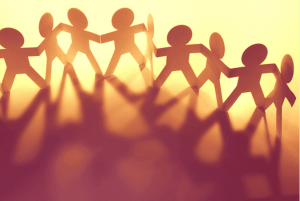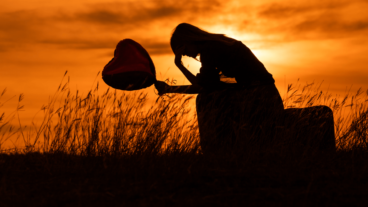Social Workers in Emergency Situations

When a disaster happens that affects a community or a large number of people, professionals from different specialties have to get involved. The goal of social workers in a crisis is to holistically resolve problems through social intervention.
In general, there should be a set of protocols in place that the social worker follows in the case of an emergency. Before we talk more specifically about the social worker’s role, however, let’s define some of the terms we’re going to use (Villalibre, 2013).
- Emergency. According to the World Health Organization, an emergency is “a case in which a lack of assistance would lead to death within minutes”.
- Catastrophe. This word comes from the ancient Greek work katastrefein (break down, destroy). The World Health Organization defines it as “any phenomenon that causes harm, economic damage, loss of human life and deterioration of health and health services in sufficient measure to demand an extraordinary response from outside sectors”.
- Disaster. This comes from the Latin des (negative, unfortunate) and astre (Astro, star). Basically, it means some kind of negative event that comes from the stars or the Gods. According to the World Health Organization, a disaster is an unforeseen event that represents a serious and immediate threat to public health. It’s also any public health situation that endangers the lives or health of a significant number of people and requires immediate action.

Using quantitative data, Aptekar (1994) also defined the differences between these terms:
- Accident or emergency. A situation in which less than a thousand people die.
- Disaster. The death toll plus the victims in immediate danger is between a thousand and one million.
- Catastrophe. A situation is a catastrophe when the death toll exceeds one million.
What Characteristics Do These Events Share?
Fource, Hernández-Coronado, Nevado, Martínez, Losada, and Lillo (1998) explain the common thread in this terminology:
- These events require immediate intervention.
- The psychological repercussions depend on the magnitude and consequences of the event.
- They can be unforeseeable and accidental. Consequently, they cause surprise, helplessness, and instability.
- They can mean immediate danger for human life or physical integrity.
“The world breaks everyone and afterward many are strong at the broken places.”
-Ernest Hemingway-
The Role of Social Workers in a Catastrophe
First of all, social workers should intervene in a catastrophe from the very beginning. In other words, they should participate in prevention efforts and create protocols for emergency preparedness. They should also be ready to work with professionals from other fields. In an emergency, teamwork will always be beneficial to the affected community.
Because the consequences of these kinds of situations are often devastating and impossible to predict, multidisciplinary intervention is crucial. After all, if you attack a problem from different angles, it gets smaller.
In these kinds of situations, social workers are there to provide victims accompaniment and support. They should also empower the community to take leadership roles and actively participate in restoring and rebuilding after a disaster. (Peñate, 2009).
Consequently, these are some of the responsibilities of social workers during disasters:
- Inform and advise relevant institutions.
- Provide the necessary information and organize and prepare for the impact of possible consequences.
- Create teams of professionals and volunteers.
- Comfort and accompany people who are directly and indirectly affected.
- Communicate with family members. Provide information about injuries, deaths, etc. They should also accompany family members to identify their loved ones.
- Manage resources and services.
- Assess and record damages to provide evidence for getting aid.
- Provide crisis therapy, write social reports, etc.
- Encourage community participation, help organize self-help groups, etc.

Social Work Goals in Emergency Situations
According to Herrero (2012), some of the objectives that social workers should have during catastrophes, emergencies, and disasters are:
- Provide information about the opportunities that social groups have available to them.
- Motivate people to have access to those opportunities.
- Help victims manage their feelings and emotions.
- Help people learn new ways to face their problems. Show them how to think about their new situation in a different way.
- Help victims recover their psychological equilibrium.
- Process the event with those affected so that they can move on with their lives.
- Establish or facilitate communication between people in crisis.
- Help individuals or families have a clear understanding of the situation.
- Restore the individual’s homeostasis with their surroundings. In other words, help them adapt to their new situation.
In conclusion, the presence of social workers in disasters, emergencies, and catastrophes is crucial. Nevertheless, most people don’t consider them as part of the response team. They are, however, a necessary part of improving the lives of those affected by these unforeseen situations. They should also be a key part of any response team in order to mitigate negative consequences.
When a disaster happens that affects a community or a large number of people, professionals from different specialties have to get involved. The goal of social workers in a crisis is to holistically resolve problems through social intervention.
In general, there should be a set of protocols in place that the social worker follows in the case of an emergency. Before we talk more specifically about the social worker’s role, however, let’s define some of the terms we’re going to use (Villalibre, 2013).
- Emergency. According to the World Health Organization, an emergency is “a case in which a lack of assistance would lead to death within minutes”.
- Catastrophe. This word comes from the ancient Greek work katastrefein (break down, destroy). The World Health Organization defines it as “any phenomenon that causes harm, economic damage, loss of human life and deterioration of health and health services in sufficient measure to demand an extraordinary response from outside sectors”.
- Disaster. This comes from the Latin des (negative, unfortunate) and astre (Astro, star). Basically, it means some kind of negative event that comes from the stars or the Gods. According to the World Health Organization, a disaster is an unforeseen event that represents a serious and immediate threat to public health. It’s also any public health situation that endangers the lives or health of a significant number of people and requires immediate action.

Using quantitative data, Aptekar (1994) also defined the differences between these terms:
- Accident or emergency. A situation in which less than a thousand people die.
- Disaster. The death toll plus the victims in immediate danger is between a thousand and one million.
- Catastrophe. A situation is a catastrophe when the death toll exceeds one million.
What Characteristics Do These Events Share?
Fource, Hernández-Coronado, Nevado, Martínez, Losada, and Lillo (1998) explain the common thread in this terminology:
- These events require immediate intervention.
- The psychological repercussions depend on the magnitude and consequences of the event.
- They can be unforeseeable and accidental. Consequently, they cause surprise, helplessness, and instability.
- They can mean immediate danger for human life or physical integrity.
“The world breaks everyone and afterward many are strong at the broken places.”
-Ernest Hemingway-
The Role of Social Workers in a Catastrophe
First of all, social workers should intervene in a catastrophe from the very beginning. In other words, they should participate in prevention efforts and create protocols for emergency preparedness. They should also be ready to work with professionals from other fields. In an emergency, teamwork will always be beneficial to the affected community.
Because the consequences of these kinds of situations are often devastating and impossible to predict, multidisciplinary intervention is crucial. After all, if you attack a problem from different angles, it gets smaller.
In these kinds of situations, social workers are there to provide victims accompaniment and support. They should also empower the community to take leadership roles and actively participate in restoring and rebuilding after a disaster. (Peñate, 2009).
Consequently, these are some of the responsibilities of social workers during disasters:
- Inform and advise relevant institutions.
- Provide the necessary information and organize and prepare for the impact of possible consequences.
- Create teams of professionals and volunteers.
- Comfort and accompany people who are directly and indirectly affected.
- Communicate with family members. Provide information about injuries, deaths, etc. They should also accompany family members to identify their loved ones.
- Manage resources and services.
- Assess and record damages to provide evidence for getting aid.
- Provide crisis therapy, write social reports, etc.
- Encourage community participation, help organize self-help groups, etc.

Social Work Goals in Emergency Situations
According to Herrero (2012), some of the objectives that social workers should have during catastrophes, emergencies, and disasters are:
- Provide information about the opportunities that social groups have available to them.
- Motivate people to have access to those opportunities.
- Help victims manage their feelings and emotions.
- Help people learn new ways to face their problems. Show them how to think about their new situation in a different way.
- Help victims recover their psychological equilibrium.
- Process the event with those affected so that they can move on with their lives.
- Establish or facilitate communication between people in crisis.
- Help individuals or families have a clear understanding of the situation.
- Restore the individual’s homeostasis with their surroundings. In other words, help them adapt to their new situation.
In conclusion, the presence of social workers in disasters, emergencies, and catastrophes is crucial. Nevertheless, most people don’t consider them as part of the response team. They are, however, a necessary part of improving the lives of those affected by these unforeseen situations. They should also be a key part of any response team in order to mitigate negative consequences.
All cited sources were thoroughly reviewed by our team to ensure their quality, reliability, currency, and validity. The bibliography of this article was considered reliable and of academic or scientific accuracy.
- Baloian, I., Chia, E., Cornejo, C., & Paverini, C. (2007). Intervención psicosocial en situaciones de emergencia y desastres: guía para el primer apoyo psicológico.
- Colegio Oficial de Trabajo social de Castilla-La Mancha. El Trabajo Social en situaciones de Crisis, Emergencias y Catástrofes en
Castilla La Mancha. Recuperado de: https://www.trabajosocialclm.com/participacion-voluntariado - Hernández-Coronado, A., Nevado, M., Martínez, RM., Losada, D, Lillo de la Cruz, A. (2006). Intervención psicológica en situaciones de emergencias. Psicología sin fronteras. Revista electrónica de Intervención Psicosocial y Psicología comunitaria, 1(1), 40-46.
- Muguruza, I. H. (2011). Los Trabajadores Sociales en situaciones de crisis, emergencias y catástrofes. Margen: revista de trabajo social y ciencias sociales, (63), 4-12.
- Peñate, Á. C. (2009). Una aproximación a la intervención del Trabajo Social comunitario en situaciones de catástrofes y desastres. Cuadernos de Trabajo Social, 22, 243.
- Villalibre Calderón, C. (2013). Concepto de urgencia, emergencia, catástrofe y desastre: revisión histórica y bibliográfica.
This text is provided for informational purposes only and does not replace consultation with a professional. If in doubt, consult your specialist.







